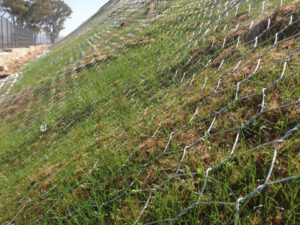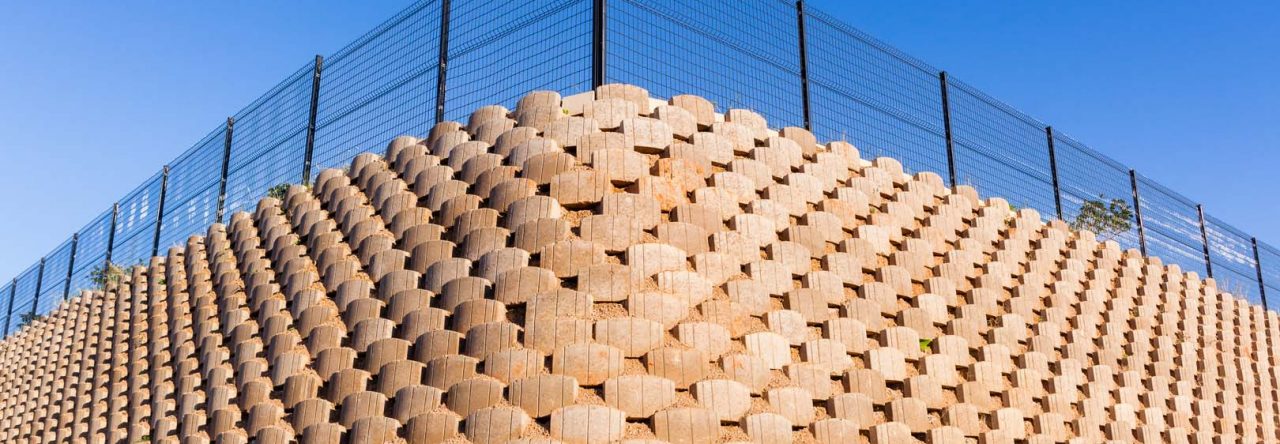Erosion can have a negative impact on landscaping, agricultural, and construction projects. It can also lead to the contamination of waterways with chemicals, sediment, and pollutants.

Best Management Practices (BMPs) are used to prevent erosion from causing problems and to control erosion after it occurs. Read on Erosion Control Charleston SC for more information.
Mulching is one of the most important and easiest-to-apply erosion control best management practices (BMPs) available to landowners. It reduces the stress of heavy rains on soil, keeps it in place, promotes plant growth, and helps prevent erosion by reducing runoff. There are many different types of mulch, including organic materials such as straw, grass clippings or leaves, wood chips, and compost. There are also synthetic options, such as geotextiles.
Erosion can occur when water runs over bare ground, picking up particles of dirt and depositing them elsewhere, often in areas where the soil is not desirable for crops. Adding a layer of erosion-control mulch in between rows of plants protects the soil and allows the roots to grow freely. It is especially useful on sloped sites that may be prone to washout during storms.
The type of mulch used is an important factor in preventing erosion. Some types of mulch decompose quickly, while others have a longer lifespan and require minimal maintenance. Some popular choices for erosion control include garden compost, shredded bark, well-rotted manure and leaf mold, twigs, tree limbs and branches, straw (particularly for strawberries), spent hops, and seaweed. These types of mulch suppress weeds, conserve moisture, and insulate the soil from temperature change, which is beneficial to plants.
It is also important to consider the thickness of the mulch. Thicker mulch will be more durable than thinner options. Some mulches are even designed to wear down as they break down, reducing the need for regular replacement.
There are also some types of mulch that can help with soil microbes, nutrient balance, and overall plant health. This is particularly important if the mulch is made from organic material. Some examples of these types of mulch are hay, pine needles, and straw (Megahan 1974).
Erosion-control mulch is an affordable option that can be applied easily by hand or with specialized machinery. However, before you choose the right erosion control mulch for your needs, it is essential to thoroughly prepare the site for application. This will involve removing debris, grading the area, and making sure the soil is ready to be mulched.
Erosion Control Blankets
Erosion control blankets, or erosion control mats, are woven and otherwise bound natural and synthetic fibers that are used to prevent the movement of soil particles. They are a key tool for many construction and land reclamation projects, including mining and oil and gas operations. In addition to helping to prevent erosion, they also serve as a protective layer of topsoil that helps maintain the integrity of slopes and channels until plants can take hold and stabilize the area.
ECBs are available in several different forms and lengths, each designed for a specific use. Most ECBs are made with a mix of natural and synthetic materials. Some are designed to be more durable and long-lasting than others. These differences are due to the size and shape of the natural materials, their permeability and longevity, as well as other factors like slope and channel limitations and environmental regulations.
A variety of materials are used for ECBs, including straw and coconut fibers. They are also often bonded together with plastic or biodegradable netting. These nettings can be either polypropylene or 100% biodegradable. They are also available in a wide range of sizes and lengths, so it is important to choose the right one for the project at hand.
In some cases, a shorter-term ECB will be preferred. These types of ECBs can be rolled up for easier transport and installation. They typically offer a high level of protection and can be anchored with soil or gravel. They are ideal for protecting slopes during construction and averting erosion until native vegetation takes root.
Short-term ECBs are available in a variety of forms, but all provide a similar benefit to the site. These blankets are often anchored in place using staples, which help secure the matting and anchor the soil or channel. Once in place, the blankets bind together with the soil particles and stabilize the steep slope.
It is also possible to seed over an ECB, and most of these blankets are porous, allowing the seeds to sprout through and grow. However, it is important to follow the manufacturer’s specifications on proper installation, as putting seed over an ECB that is not intended for this purpose can have detrimental effects.
Sediment Traps
Sediment traps are impoundments that allow sediment in runoff to settle before being discharged. These structures are usually placed within a drainage basin to protect downstream waters, such as lakes or streams. They can be a temporary control measure during construction, or they may serve as permanent sediment traps. Sediment traps must be designed to have a large surface area in order to properly collect sediment from runoff.
Sediment traps should not be used within drainage ways that have high flow volumes or velocities and are most effective for collecting medium- and coarse-grained particle sizes. They must be built to be easily inspected and cleaned out. It is recommended that a sediment trap have an emergency spillway or dewatering pipe in case the weir fails to operate properly.
A monitoring post should be located at the top of a sediment trap to indicate when it has filled to half of its wet storage depth. When this occurs, the sediment volume should be removed and disposed of. The weir should also be inspected to ensure that it is functioning properly and that any clogs or obstructions are removed immediately after each storm event.
This control measure is only a temporary soil stabilization practice, and revegetation will be required for long-term stability. However, it can be useful in minimizing washout of young vegetative growth that is trying to establish itself on slopes with grading steeper than 3H:1V.
These devices are characterized by an impervious basin with a low crest elevation and can be made from a variety of materials, such as concrete, block, or plastic. They are commonly used at the outlets of sediment diversion structures, channels, slope drains, and construction site entrances. They are typically located as close to the source of sediment inflow as possible and should be designed for stability as well as energy dissipation.
Zooplankton actively swimming into a sediment trap can introduce errors in POM flux measurements since it is impossible to separate these “swimmers” from zooplankton that are passively sinking into the trap. Consequently, it is important to remove any detrital zooplankton from a sediment trap sample prior to analysis.
Drainage
Drainage systems remove excess water from a site. This is important for erosion control, as excess water causes erosion and washout. The water may be groundwater, rainwater, or effluent (sewage or waste) from a building or a septic system. The drainage system must be designed to provide sufficient water for crop use and to allow access for vehicles.
Some soil types are more erosive than others, and the identification of these soils can help in route selection for construction projects. Soil survey maps, prepared by the Natural Resources Conservation Service, are helpful for this identification. Local NRCS offices can also be helpful in providing advice about the best erosion control measures applicable to a given area.
Erosion can be caused by rainfall dislodging loose soil particles from unprotected areas and by water running over the soil, carrying some of these materials away with it. In general, the rate at which soil particles are removed depends on the intensity and duration of rainfall or runoff and on the volume and characteristics of the water flow. Eventually, the transport capacity of the water becomes insufficient for the entire load of sediments, and deposition occurs.
During and after construction, drainage problems must be addressed to minimize erosion and stormwater pollution. Erosion control blankets, silt fences, and coir logs can be used to stabilize disturbed slopes and channel areas, protect vegetation, and prevent mud and sediment from entering the storm water drainage system.
A dike or berm should be constructed at the highest point of the project to prevent water from flowing downhill and washing out the work area. This can be done using borrowed material to avoid disturbing natural terrain where possible.
Erosion is more likely to occur in a concentrated area, so it is important that the energy of water be spread out over as wide an area as possible. This can be done by using a level spreader, which is a pipe set across a slope and which releases water along its length, or by creating a series of depressions or gullies in the bank to slow down the flow. Streamside fencing or planting can also be used to reduce the impact of water on banks.
